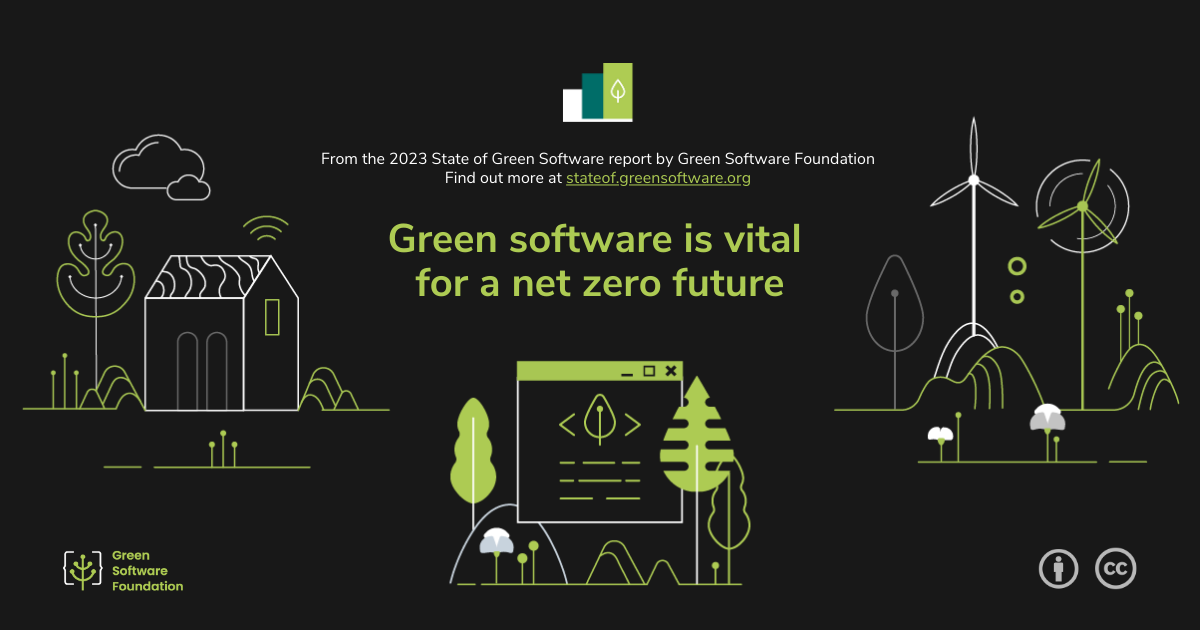Green Software is vital for a net zero future
As reported by McKinsey, “Almost half of Fortune 500 companies have commitments to reduce emissions by 2030. Hyperscalers such as AWS, Microsoft Azure, and Google Cloud have also developed offerings capable of reaching net zero or even negative carbon emissions within the next decade or two.” The results of our State of Green Software (SOGS) survey support this statement, with 47% of respondents reporting that their companies have public and comprehensive climate goals. Another 22% have some public goals, but nothing comprehensive in place.
Greening the design of software as the core demand driver and end goal of all hardware is much more likely to reduce the emissions roadmap of ICT as a whole rather than focusing only on hardware.
For years people focused on making computer hardware more efficient to help the environment. However, software was not considered an important factor in mitigating climate change because energy consumption was only perceived as occurring at the hardware level. As a result, the focus turned to making hardware more energy efficient, with the assumption that the environmental impact of software would subsequently decrease. Only recently has the industry had a collective ah-ha moment, recognizing that most commercial hardware development is driven by software demand. The real issue is the demand for and development of increasingly data-intensive software products. This is taking place with a lack of software design thinking around storage and energy demand. Net zero goals cannot be achieved without taking actions that enable software to be more energy efficient and do less when energy is dirty and more when it’s clean.
Building green software involves improving efficiencies across the development, deployment, usage, and maintenance stages. Organizations should implement a framework to measure their carbon footprint and energy optimization throughout the software lifecycle.
As an example, recent research by Google calculated that dormant data, or “unattended projects”, in its data centers accounted for over 600 gross metric tons of CO2 emissions. Google rolled out an Unattended Project Recommender solution that notifies users of their own dormant data and its CO2 emissions and prompts them to remove unnecessary data. In this example, the modest recommended solution to the proliferation of unnecessary and unused data may be seen as a patch or remediation for prior environmental gaps in software design, rather than as a feature in its own right.
The remedial green software solution was designed to reduce data center demand by:
- detecting unused data
- calculating its environmental impact
- encouraging responsible user action
While a lot of focus has been on data centers, it is end user devices, including laptops, tablets, phones, and printers, that contribute the most emissions. According to McKinsey, personal devices contribute 1.5 to 2 times more than data centers. Tracking and reducing emissions connected to these devices will be crucial for achieving net zero goals.
